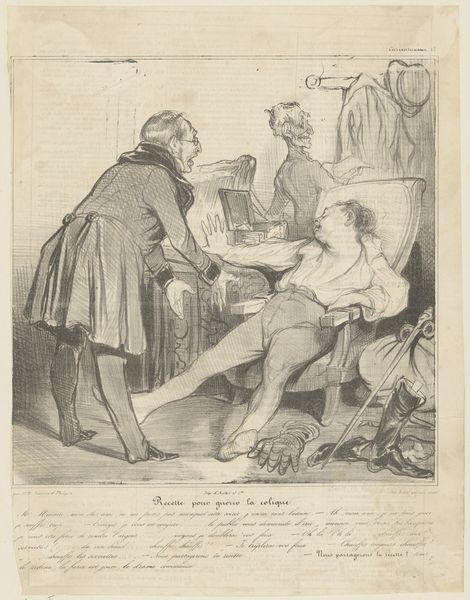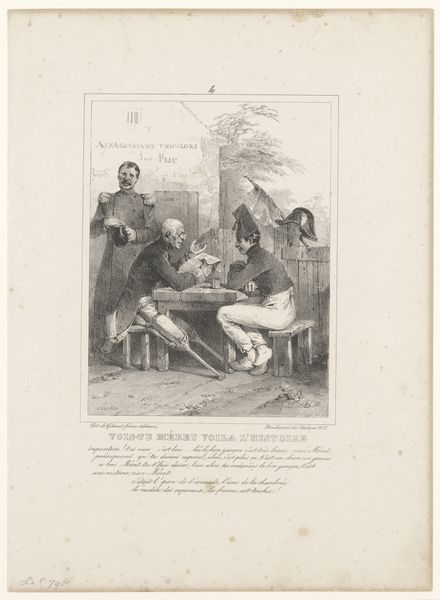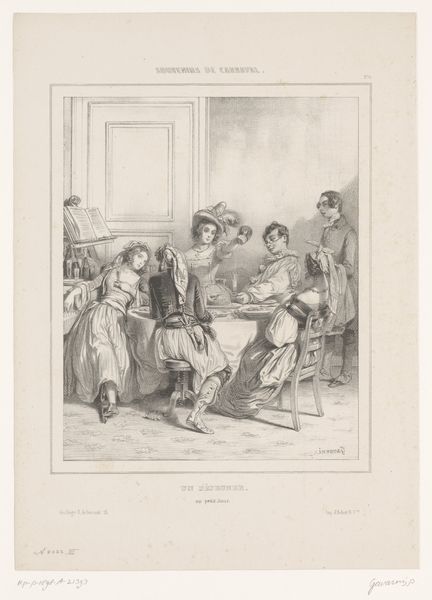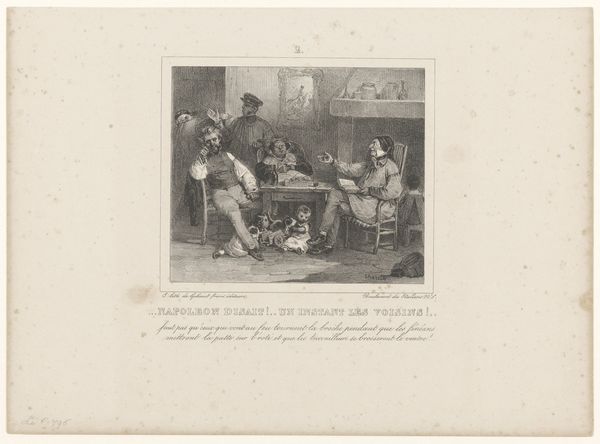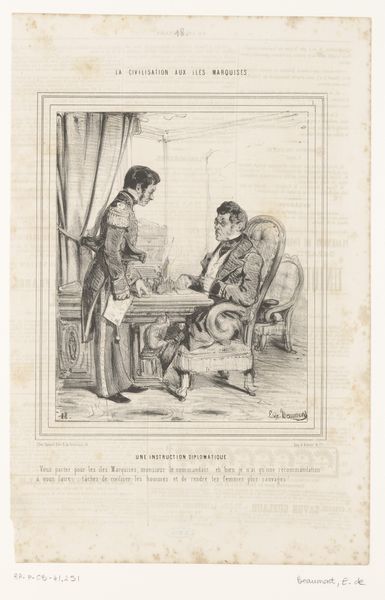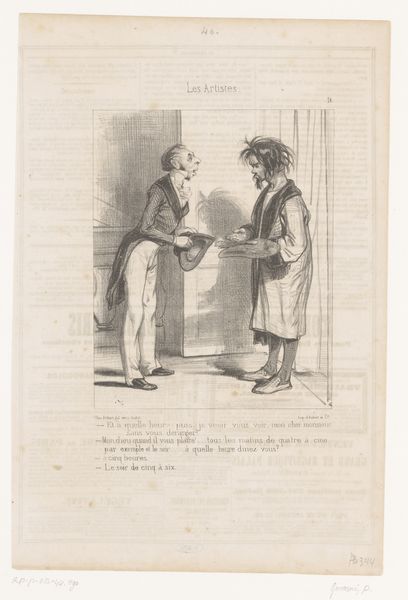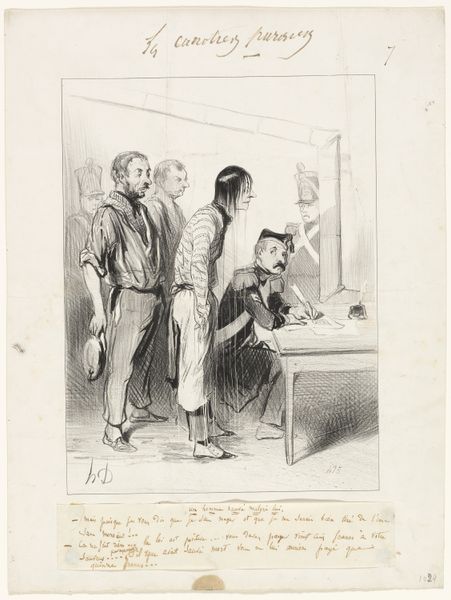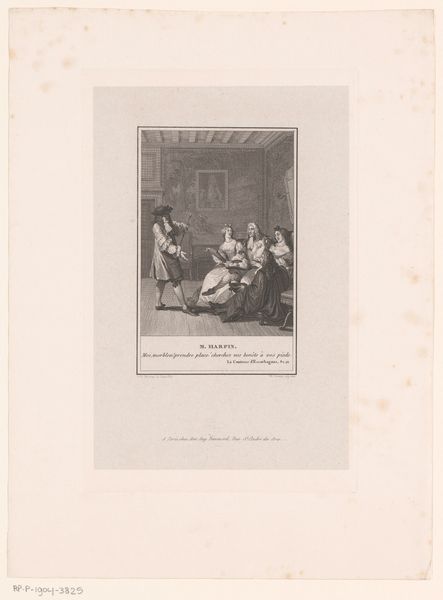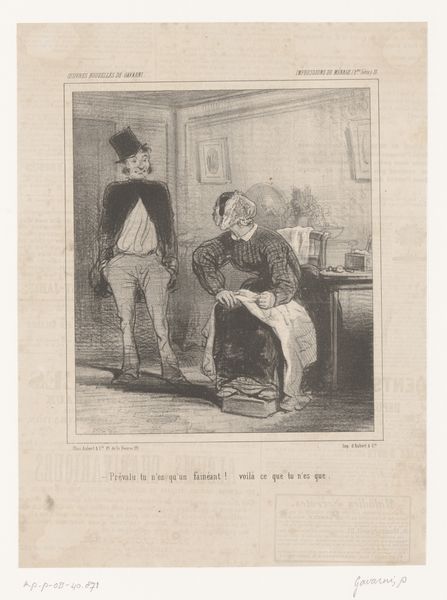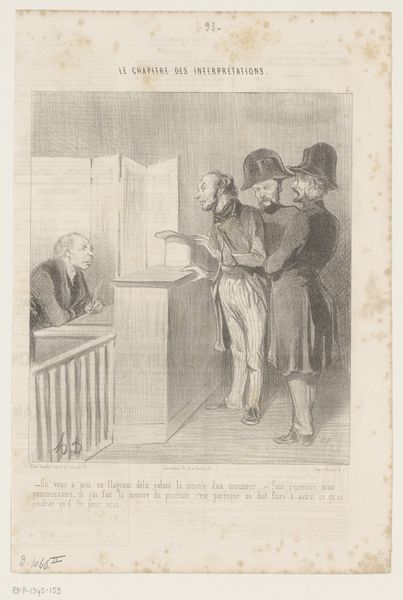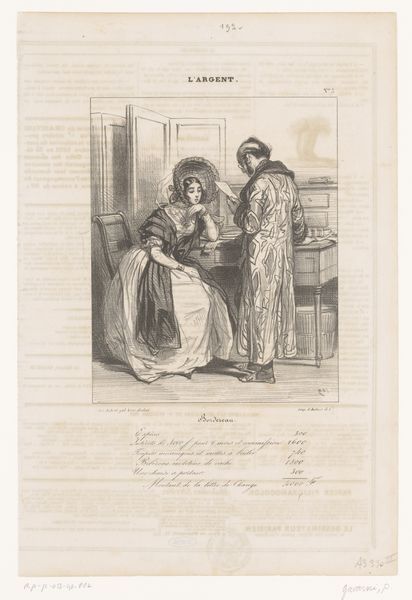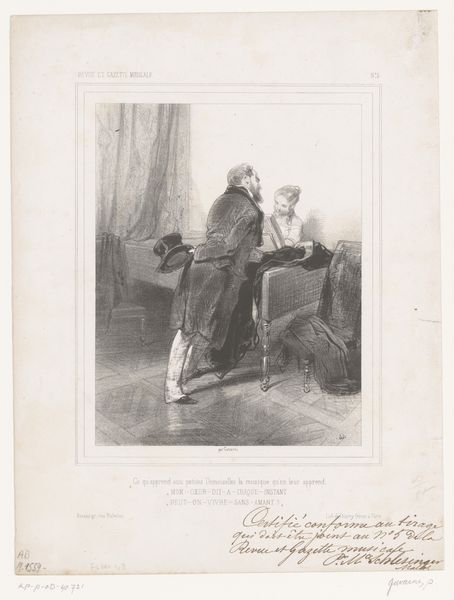
Vrouw kijkt toe hoe haar echtgenoot en geliefde een bordspel spelen 1837
0:00
0:00
paulgavarni
Rijksmuseum
#
comic strip sketch
#
imaginative character sketch
#
light pencil work
#
pencil sketch
#
personal sketchbook
#
idea generation sketch
#
sketchwork
#
sketchbook drawing
#
storyboard and sketchbook work
#
sketchbook art
Dimensions: height 317 mm, width 233 mm
Copyright: Rijks Museum: Open Domain
Curator: Welcome to the Rijksmuseum. We’re standing before Paul Gavarni’s 1837 pencil sketch, "Vrouw kijkt toe hoe haar echtgenoot en geliefde een bordspel spelen," or "Woman watching her husband and lover play a board game." Editor: It's… striking. The composition immediately pulls you in with its uneasy dynamic. There’s such a palpable sense of tension and quiet observation. Curator: Indeed. Gavarni masterfully employs line and form to convey this tension. Notice the husband, ostentatiously dressed, drawing our attention. Contrast this with the muted figure of his lover, the game being played between them the composition's center. And the wife, a passive observer; Gavarani uses these details to establish visual and social hierarchy. Editor: And what about the historical implications here? It’s difficult to ignore the societal constraints placed upon women in 19th-century Europe. She's trapped within this love triangle, made all the more public. How much agency does she really have? Her stillness speaks volumes, I find it devastating that her power seems limited to merely observation. Curator: Yes, her positioning highlights the limitations placed on women of this era, contained within the domestic sphere. She is physically confined, rendered as an observer rather than a participant. However, let us also consider her gaze: critical and knowing, this brings power back into the composition, suggesting she's neither naïve nor defeated, adding depth to her character and an inherent dynamism to the composition overall. Editor: The sketch seems rife with contradictions then. Gavarni both highlights female powerlessness but grants the female figure strength. The board game also is a strong comment on chance and the different kinds of social game she finds herself forced to play, suggesting Gavarani is taking the side of those marginalised. The line work captures not only appearances, but an entire emotional ecosystem, reflecting her quiet defiance, the complicated love dynamics of the time, as well as Gavarni's possible sympathy for her plight. Curator: Gavarni's skill in manipulating line and space creates a morally ambiguous and unsettling, yet undeniably compelling snapshot of a particular social moment. Editor: Ultimately, Gavarani presents us with a space for contemplating gender, society, and the often-painful games of love and power in the nineteenth century.
Comments
No comments
Be the first to comment and join the conversation on the ultimate creative platform.
